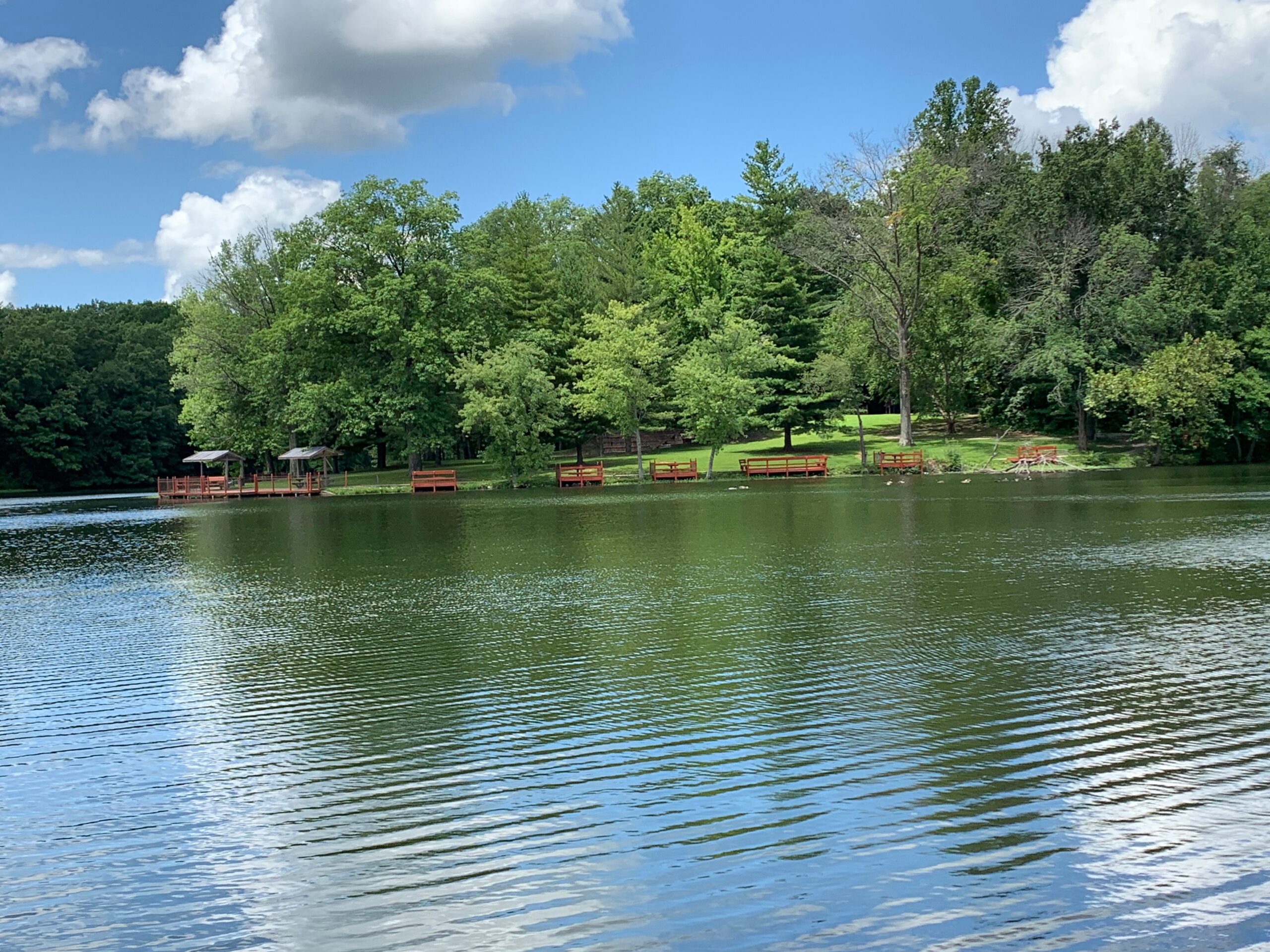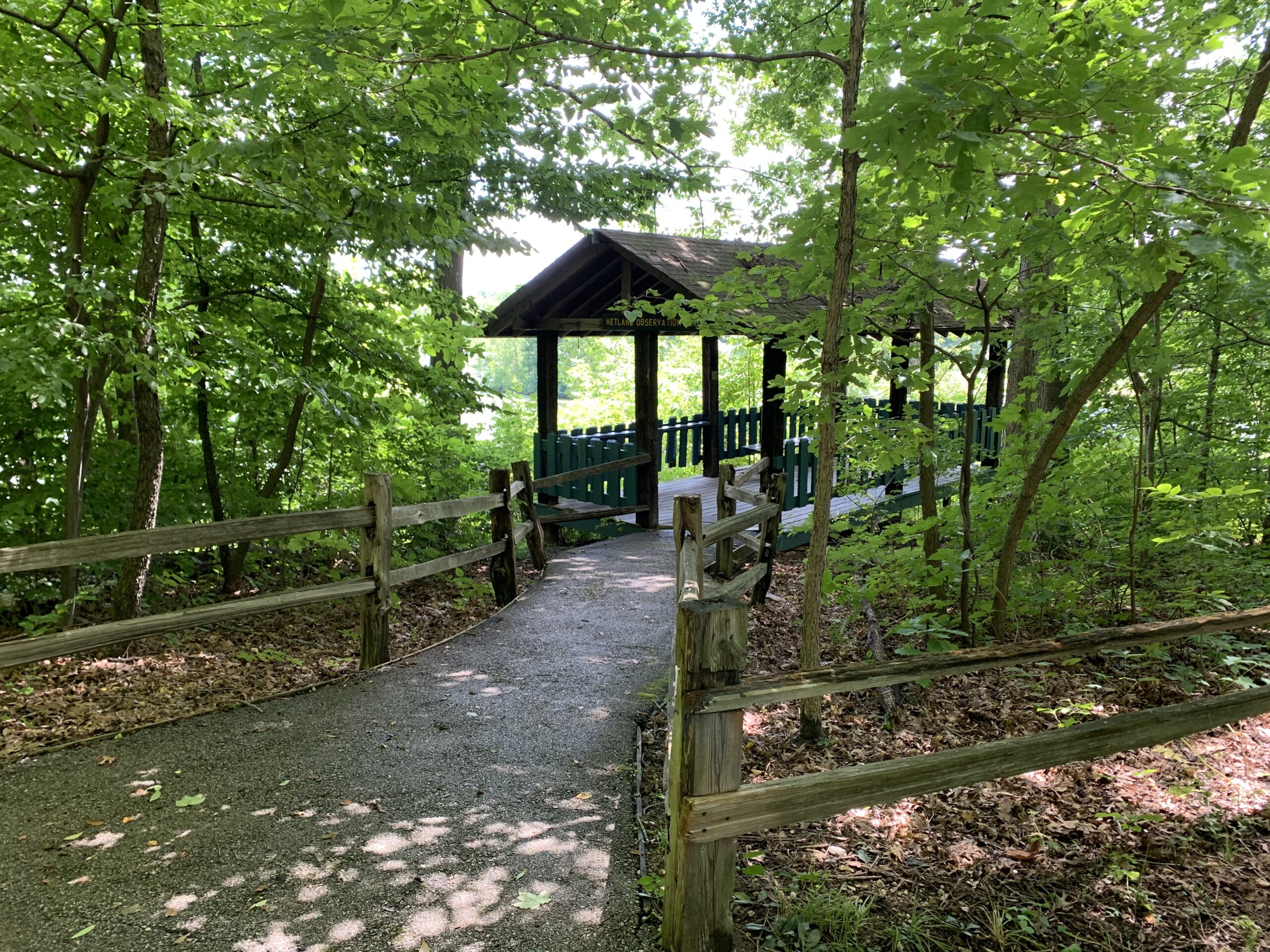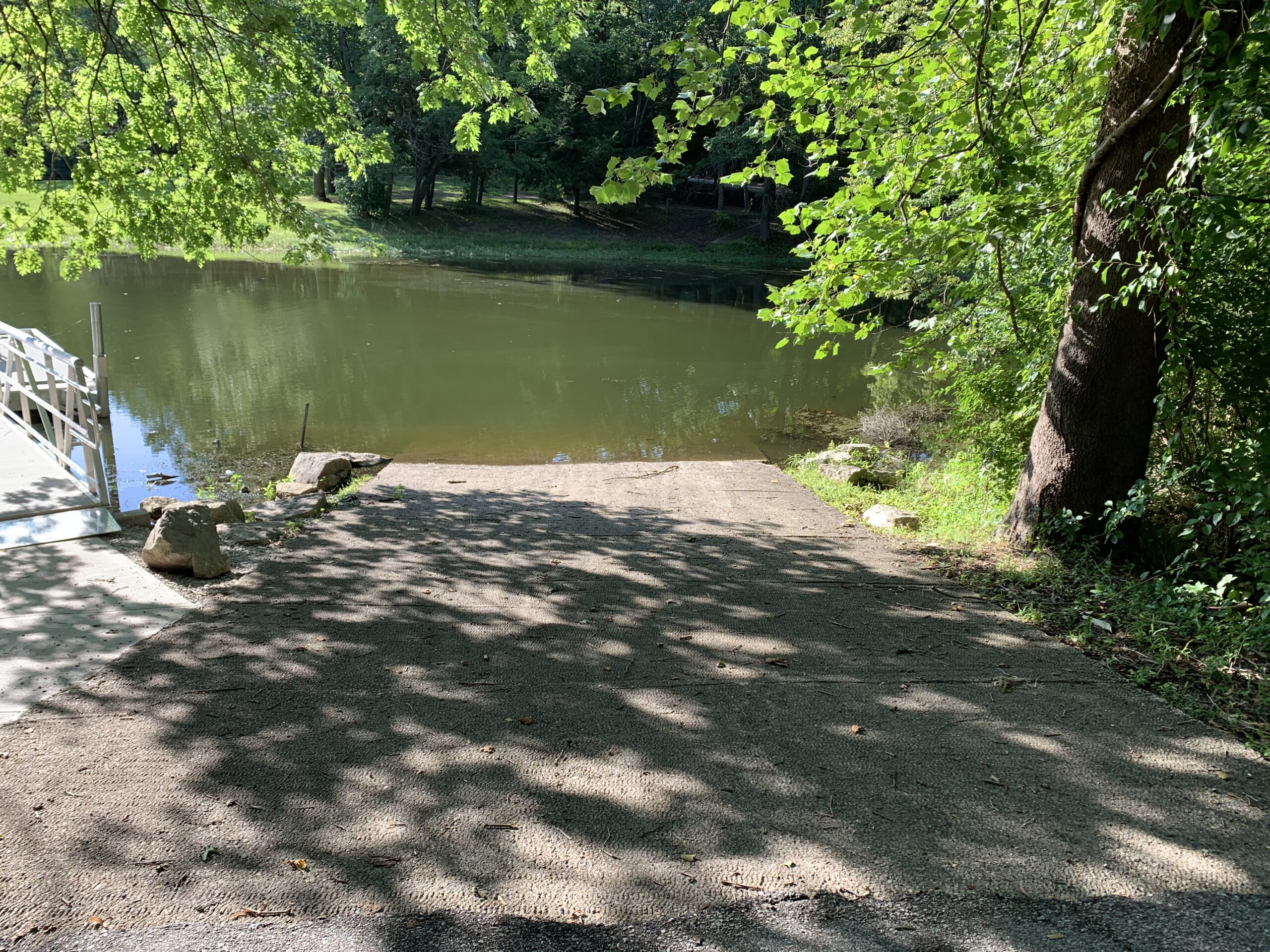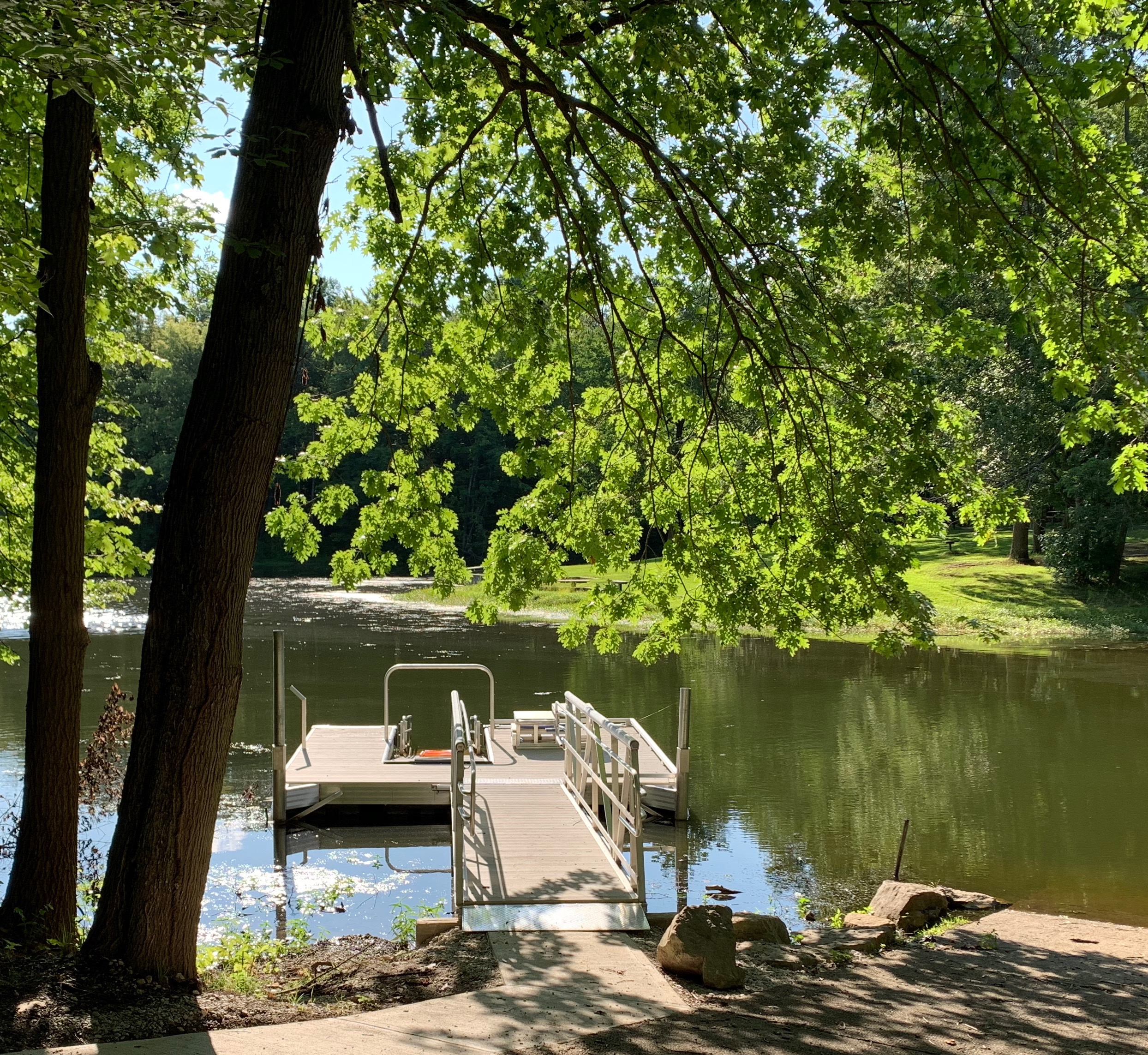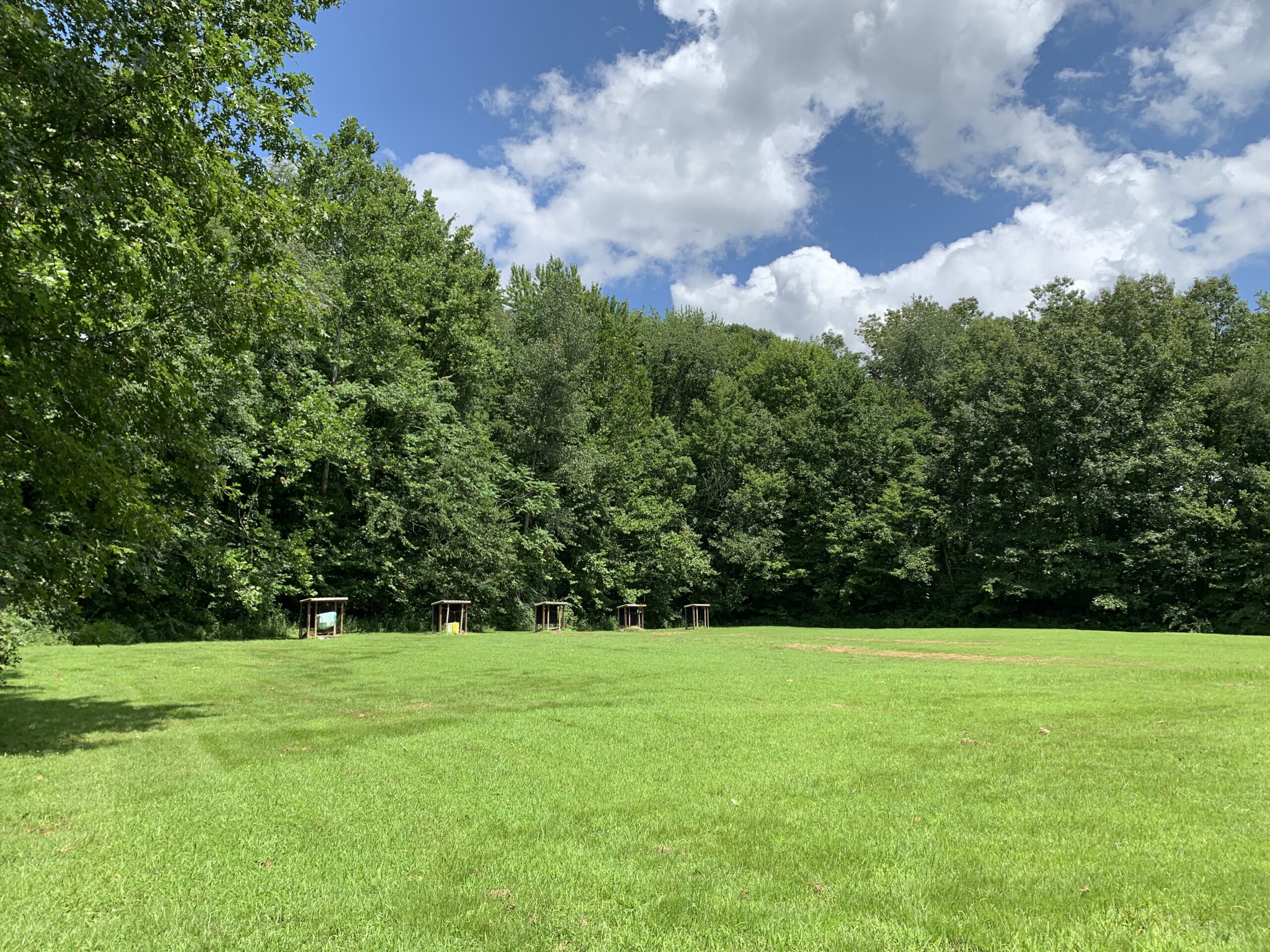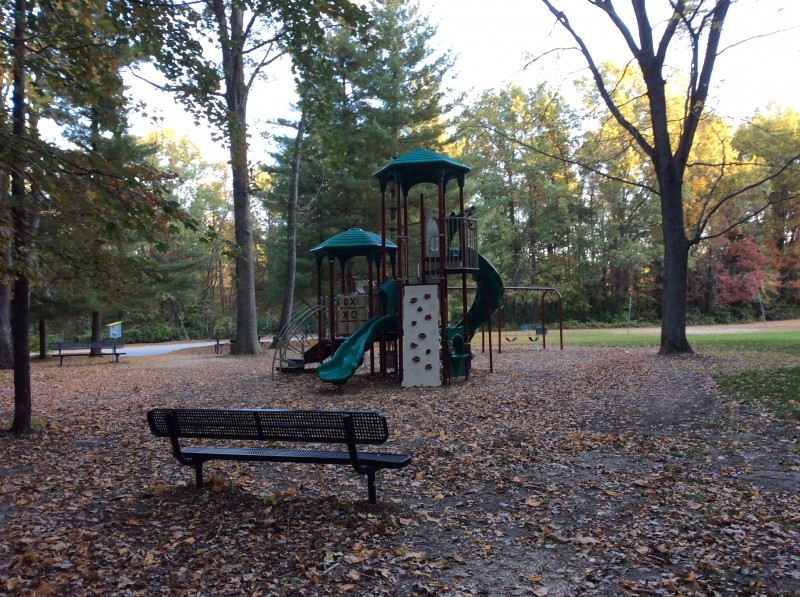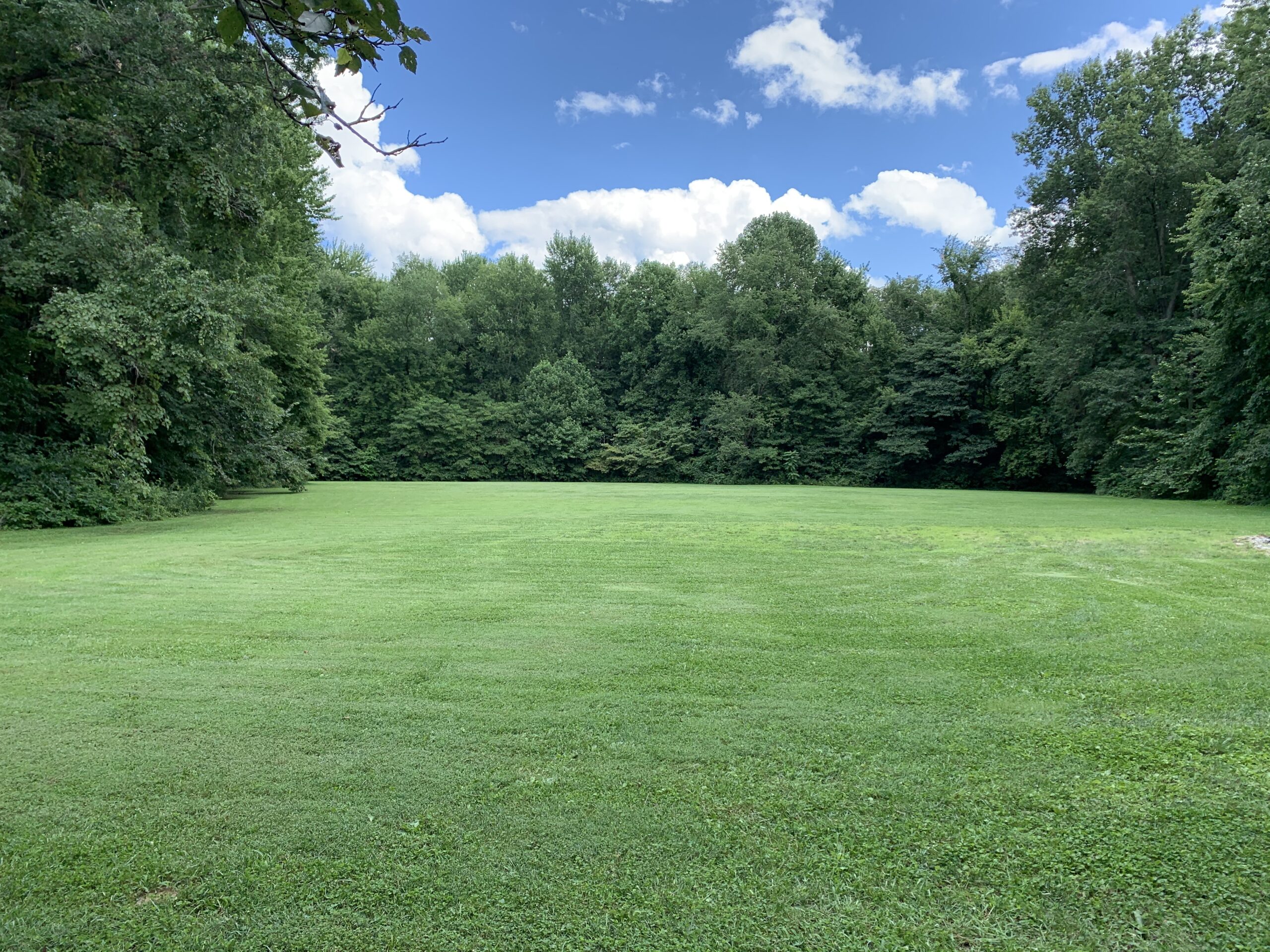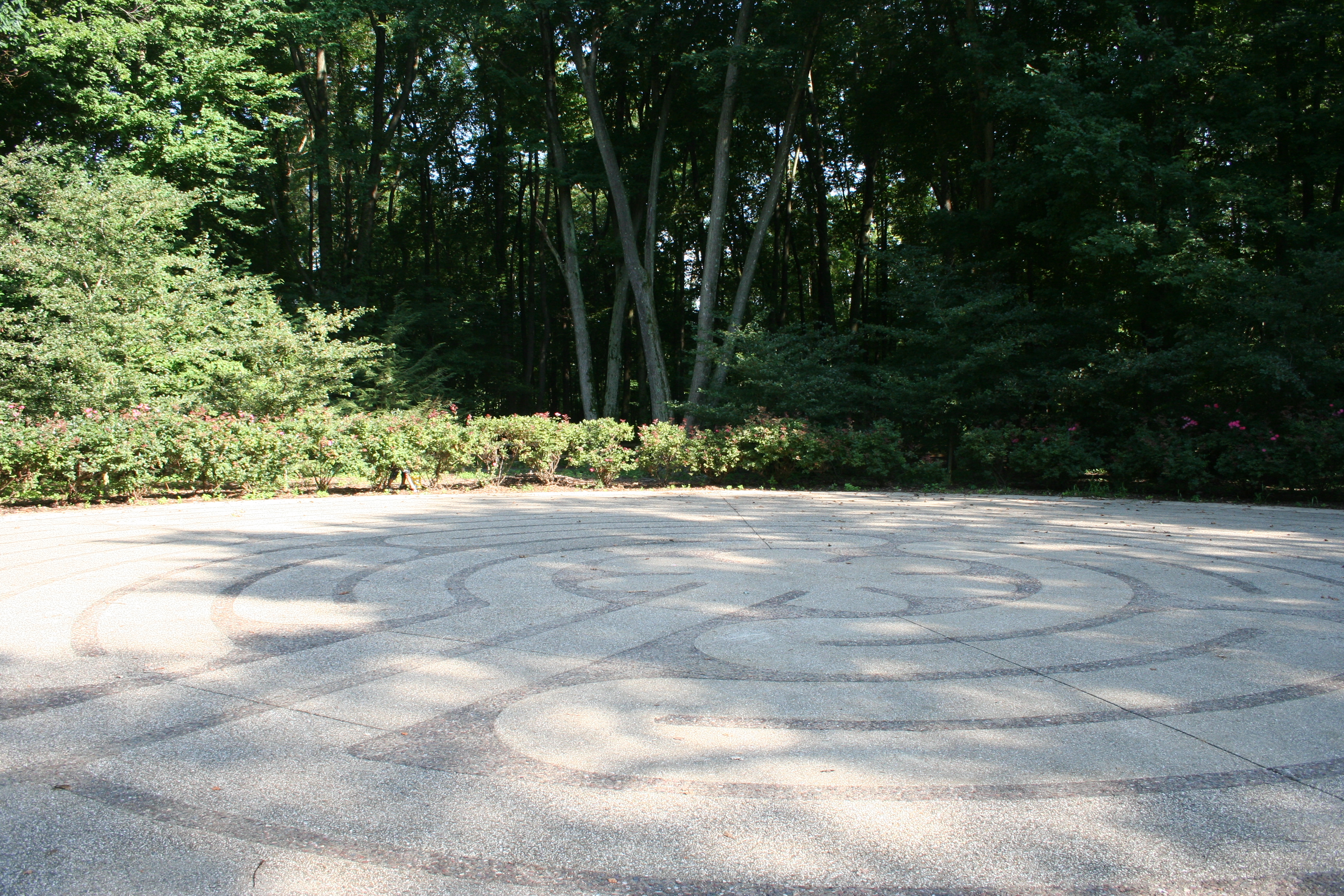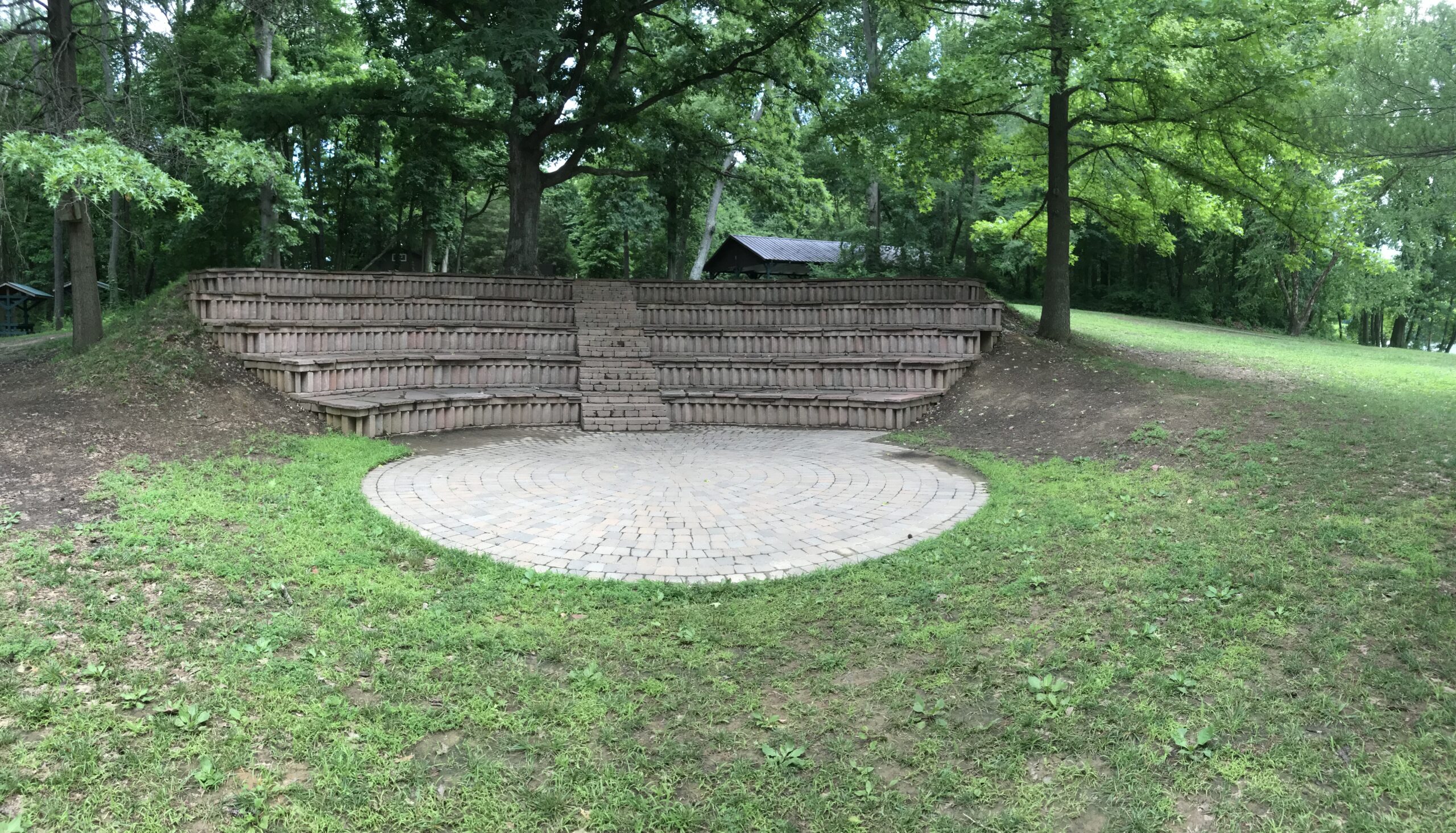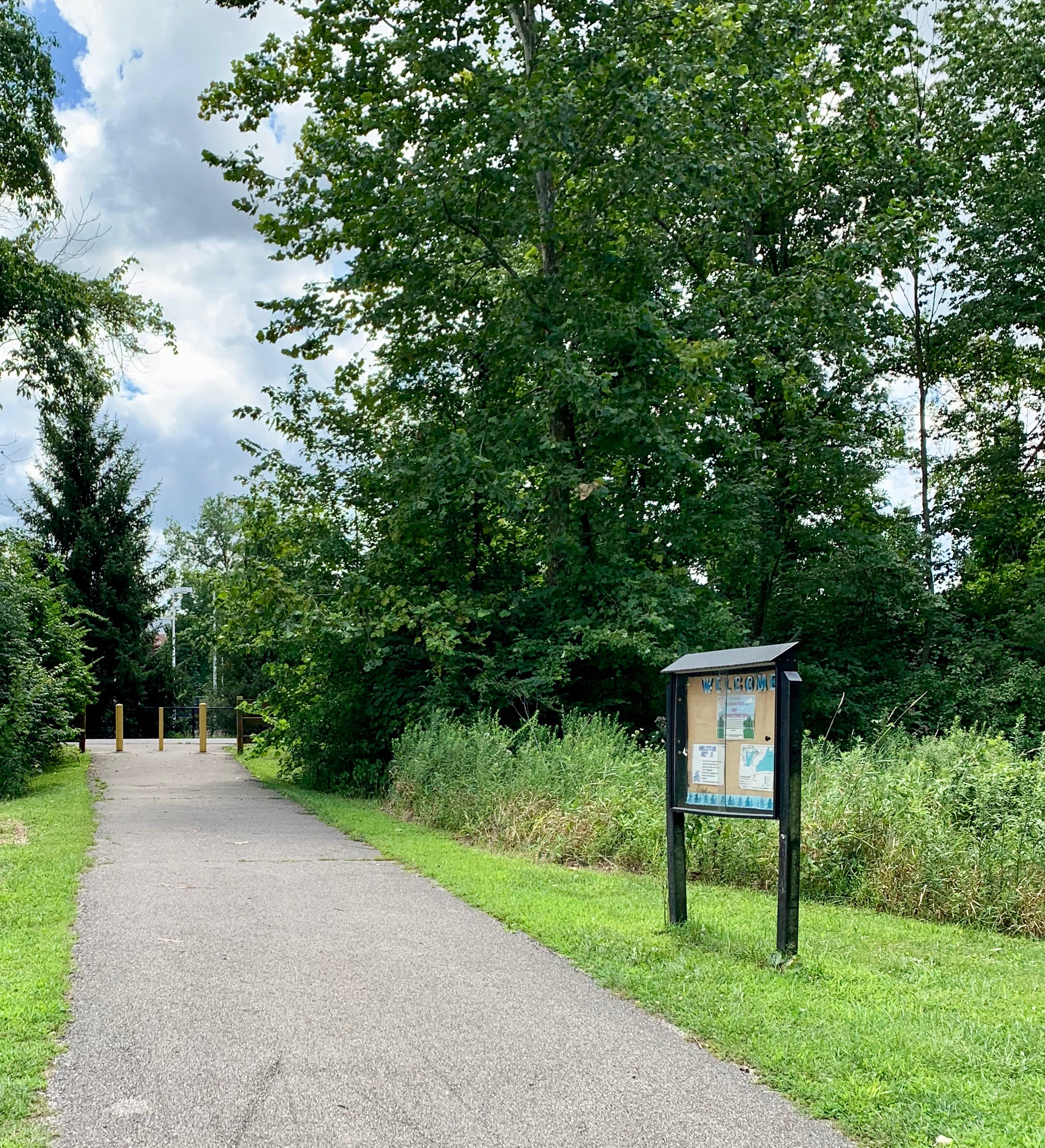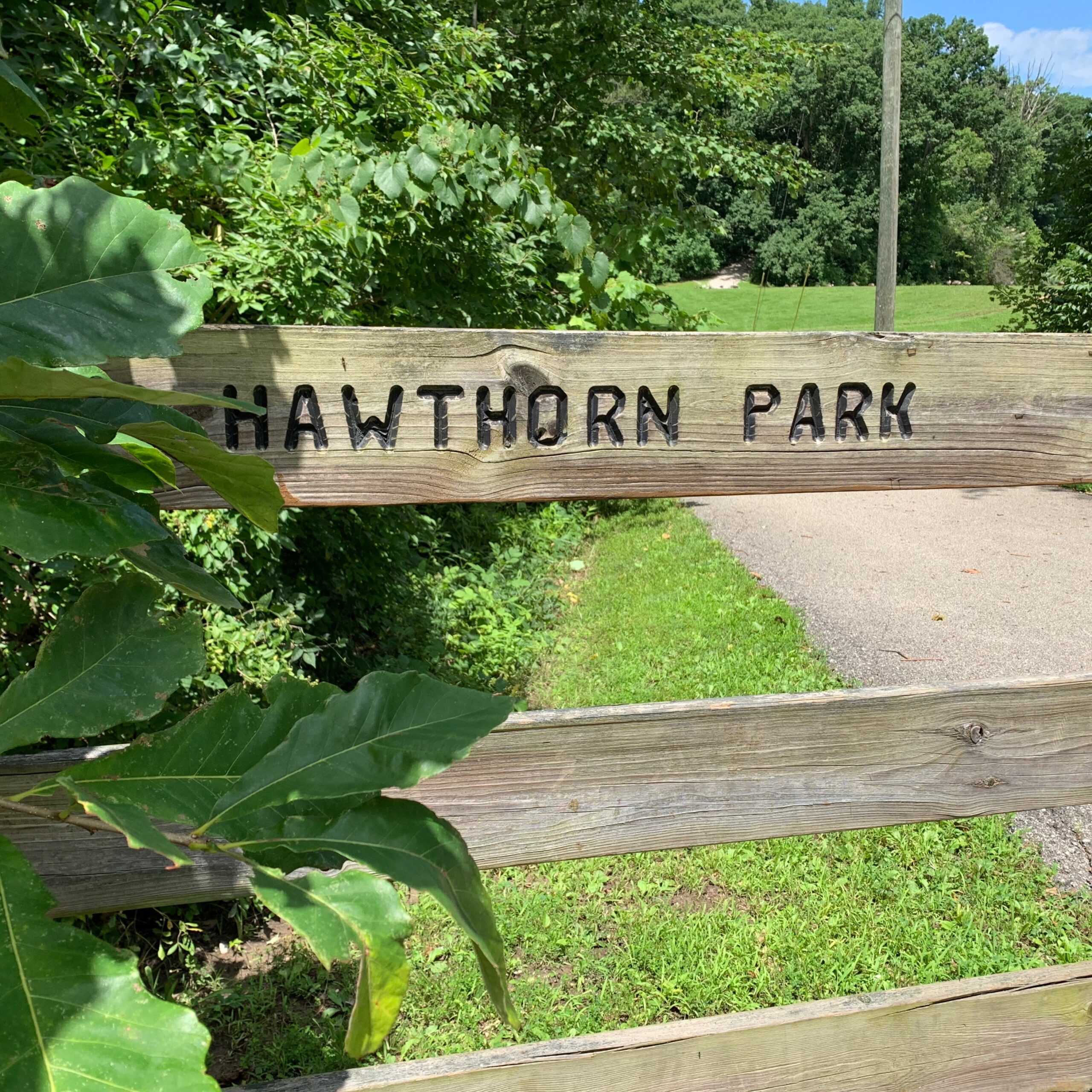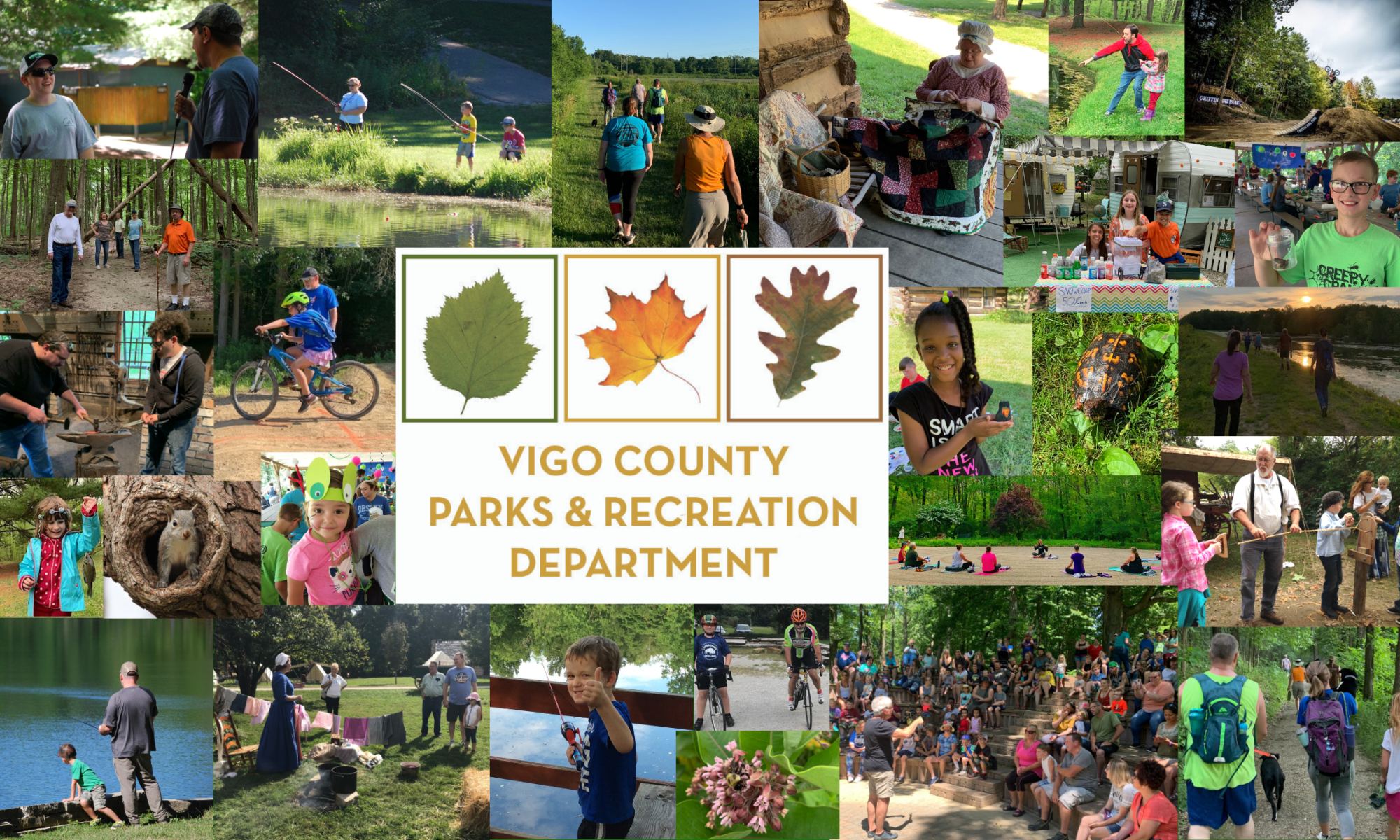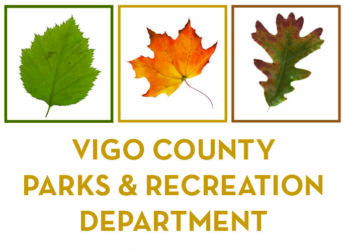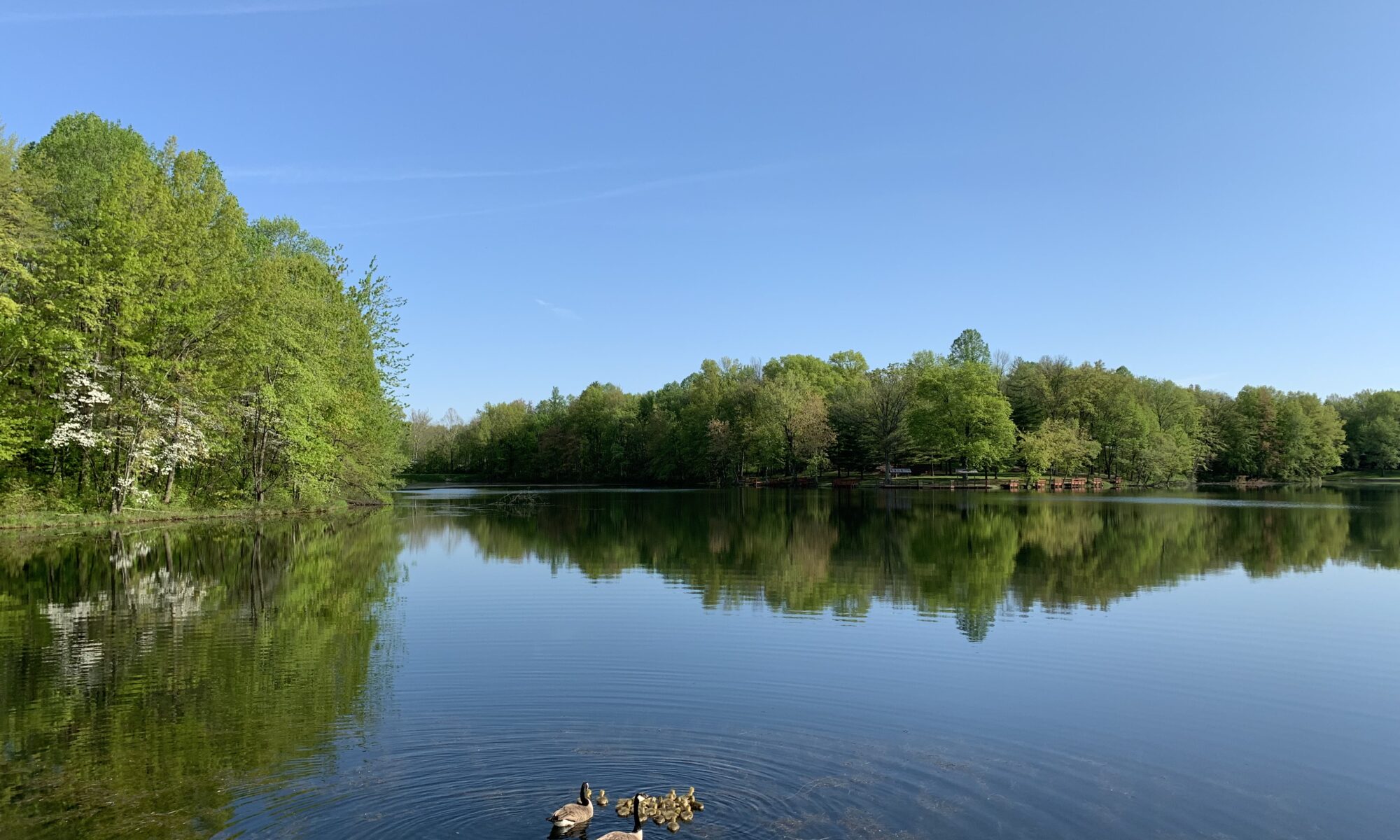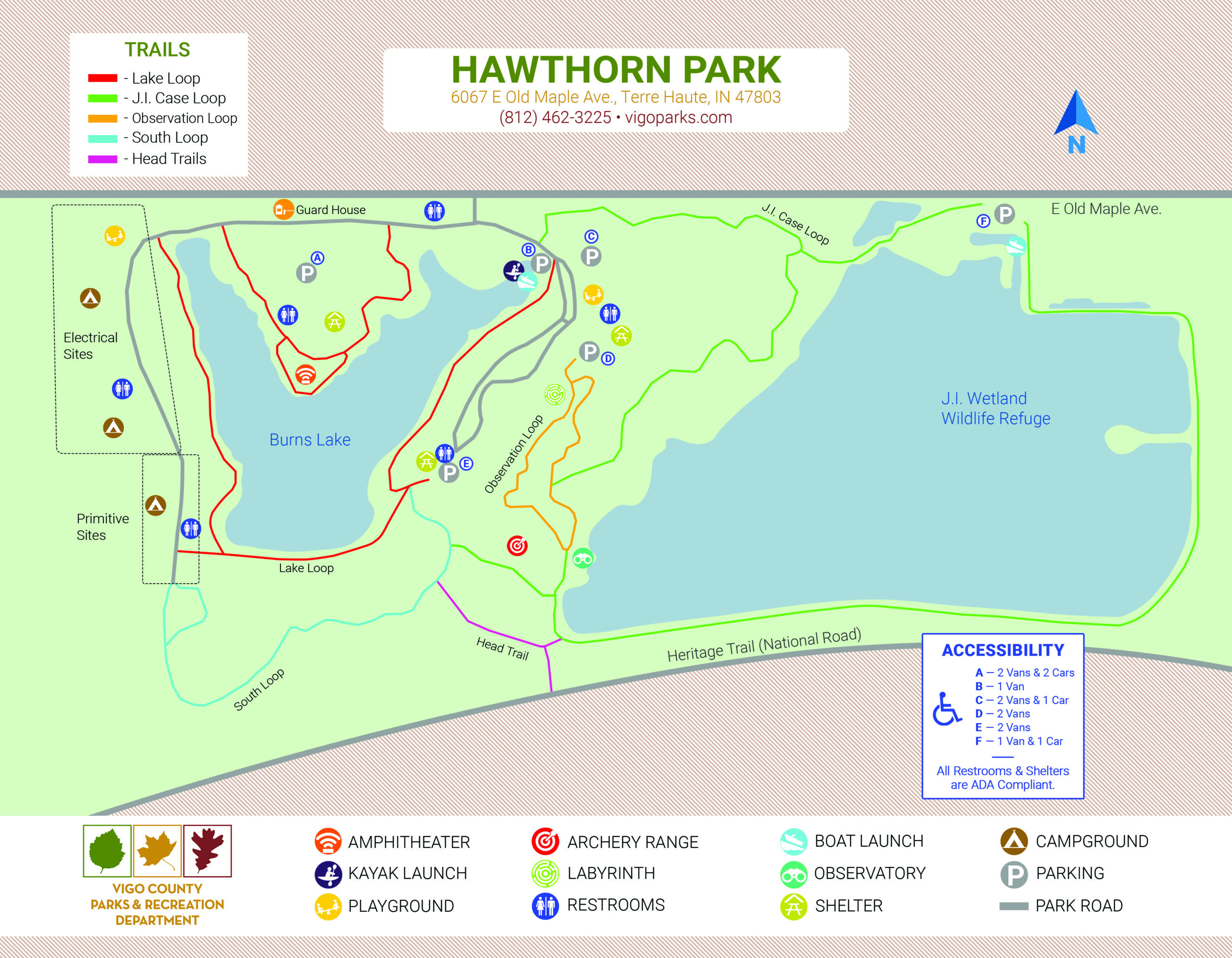Hawthorn Park & J.I. Case Wetland Wildlife Refuge
Address: 6067 E. Old Maple Avenue, Terre Haute, IN 47803
Phone Number: 812-462-3225
VCPRD Administrative Office Phone Number: 812-462-3392
Full-Time Staff
Trueman Fraza, Maintenance Specialist
Tony Colletti, Maintenance Specialist
Larry Evans, Maintenance Specialist
Park Caretakers
Angel Earls
Park Information
Total Acreage: 256.72 acres
Total Water Acreage: 68.60 acres
Burns Lake Acreage: 18.30 acres
J.I. Case Wetland Wildlife Refuge Acreage: 50.30 acres
History
A major multi-purpose park was established in the northeast section of the county in 1980 when 233.22 acres of land was purchased in Lost Creek Township. Of that acreage, 206.55 acres (originally owned by Anton Hulman) was purchased from the Archdiocese of Indianapolis and 26.67 acres from Herbert and Lorene Moss. As an abundance of hawthorn trees were growing on the property, the park was named Hawthorn Park. The caretaker’s home and the maintenance shops were located on the Moss property, across the road from the park property. In 1985, the Vigo County Commissioners deeded approximately 23.5 acres to the Parks Board. This addition brought the total acreage of Hawthorn Park to 256.72 acres.
Park Overview & Features:
Located on East Old Maple Avenue, Hawthorn is six-tenths of a mile north of U.S. 40 off of Hunt Road. The park is divided into two major areas of land, Hawthorn Park on the west and J.I. Case Wetland Wildlife Refuge on the east. On the park’s south boundary is Rose-Hulman Institute of Technology and the Heritage Road National Trail.
Inside Hawthorn Park is a lake, campground, picnic shelters, playgrounds, archery range, trails, and labyrinth. Burns Lake, 18.3 acres, has a boat launch and fishing docking located around the lakes north side. The lake is stocked with bluegill, redear sunfish, large-mouth bass, channel catfish, and crappie.
The campground, located on the west side of the park, has approximately 70 modern sites with electricity and approximately 15 primitive sites. Shower houses, restrooms, and a dump station are available to campers.
Three picnic shelters on the parkland each hold 200 people are available for year-round rentals. A large playground is located between Dogwood Shelter, a fully accessible trail stretches 1,850 feet in length. On the east side of the trail, a wildlife observation shelter overlooks J.I. Case Wetland Wildlife Refuge.
The levee for J.I. Case Wetland Wildlife Refuge was constructed in 1984. The lake was filled during early 1985 and a boat launch added. The primary purpose for the lake is waterfowl management with fishing designated as a secondary use. The 50.3 acre lake attracts migratory birds in the fall and provides excellent fishing opportunities, especially in the spring. The lake is stocked with bluegill, redear sunfish, large-mouth bass, channel catfish, black crappie, yellow bullheads, and warmouth.
The 23.5 acres, east of Hunt Road and across from J.I. Case Wetland Wildlife Refuge, have been left in its natural state and serves as a wildlife nesting area.
As a multi-purpose park, Hawthorn attracts a wide variety of visitors from all walks of life, They include campers, fishermen, swimmers, runners and joggers, school groups, businesses and organizations renting the facilities, family and school reunion groups, church groups, Scout groups, and individuals seeking a serene atmosphere.
The layout of the roads and trails at Hawthorn Park is especially conductive to joggers and runners. The Terre Haute triathlon, a Tri-Fed sanctioned event, is held annually at the park and entices sports enthusiasts from all over the United States. The Terre Haute Road Runners sponsor their runs in the park each year.
Kenneth E. Smith Memorial Labyrinth and Meditation Garden at Hawthorn Park
The Kenneth E. Smith Memorial Labyrinth is located in Hawthorn Park adjacent to the Dogwood Shelter. The labyrinth, completed in 2003, is an 80 foot diameter circle constructed out of aggregate mix concrete. It is patterned after the labyrinth that was laid on the floor of the Chartres Cathedral in France around 1220 A.D. The singular path is switchback, turning and twisting, forcing walkers to concentrate as they make their way forward to the middle of the labyrinth and back again. There are 34 turns on the path going to the center. The path is 30″ wide with 6″ in-between allowing wheelchairs or walkers to be used. A meditation garden surrounds the labyrinth. A comfortable swing, benches, a babbling water fountain, rosebushes, trees, and shrubs create a quiet space and blend into the park proper. The garden has been maintained by the Wabash Valley Master Gardeners since 2010.
The labyrinth has been found in all traditions throughout history in various forms around the world. It is an ancient therapeutic tool that has been rediscovered and is growing in popularity. Unlike the maze, the labyrinth has only one path so there are no tricks to it and no dead ends. Labyrinths have served as spaces for meditation, ritual, community celebrations, gatherings, and children’s games to being used as places for guides and holistic problem-solving devices. Presently, labyrinths are being built at hospitals, schools, parks, spas, nursing homes, and even in individuals’ yards.
This labyrinth and garden is designed for all ages, those experiencing grief or emotional problems or those who simply want to free their minds of the pressures of the day. Children simply enjoy the challenge of staying within the boundaries of the path.
Mrs. Lavern Smith donated the major part of the funding for this project in memory of her late husband, Kenneth E. Smith, who died in May 2000.
 Hawthorn Park Map
Hawthorn Park Map
Park Photos
